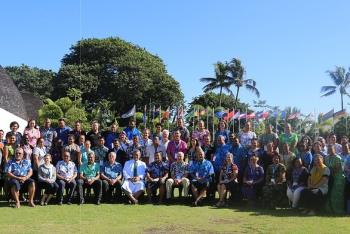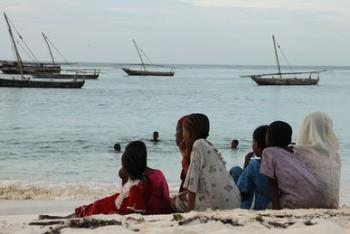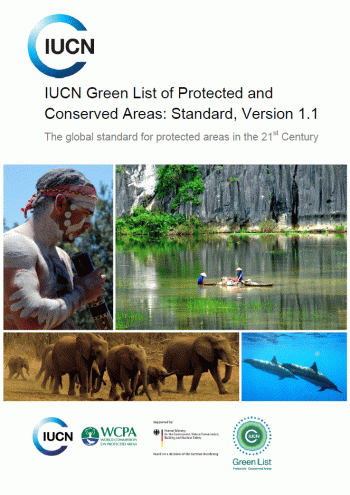PAGE Key Concepts
Governance and equity
Protected and conserved areas are a cornerstone of global conservation efforts, they protect biodiversity, restore degraded landscapes and provide ecological services and livelihood opportunities as well as being a place for people to reconnect with nature. However, there are also concerns about…
Protected and conserved areas are a cornerstone of global conservation efforts, they protect biodiversity, restore degraded landscapes and provide ecological services and livelihood opportunities as well as being a place for people to reconnect with nature. However, there are also concerns about unfair outcomes for people affected by protected area declarations, which include social justice and human rights issues. Recent reports from the United Nations Special Rapporteurs have highlighted the breadth of these issues, particularly with regard to Indigenous Peoples and local communities.
Aichi Target 11, adopted by the 193 State Parties to the Convention on Biological Diversity (CBD) in 2010, states that protected areas must be equitably managed by 2020 (CBD, 2010). The word equity captures the notion of fairness, and in the context of area based conservation, three dimensions of equity are identified:
- Recognition: acknowledgement of, and respect for, actor’s rights and their identities, knowledge systems, values and institutions.
- Procedure: inclusiveness of rule and decision-making, transparency, accountability, access to justice and dispute resolution.
- Distribution: sharing of costs and benefits among different actors, and how the costs experienced by some actors are mitigated.
Based on this framework, CBD Parties adopted voluntary guidance on equity at COP14 in November 2018, intended to be applied in any context for nature conservation and sustainable development.
Why the focus on governance?
The concept of governance offers a lens in which to examine the complex issues around equity. The word ‘governance’ itself refers to decision making, and it is a powerful concept for equity, rights and livelihoods. Governance concerns how and by whom decisions about a protected and conserved area are made and who is (or should be) accountable for those decisions. It is about who has power and responsibility. More fully, it can be understood as “…interactions among structures, processes and traditions that determine how power and responsibilities are exercised, how decisions are taken and how citizens or other stakeholders have their say…”. It is critical because, amongst other reasons:
- Governance is the variable with greatest potential to affect conservation coverage.
- Governance is a main factor in determining the effectiveness and efficiency of management.
- Governance is a determinant of appropriateness and equity or fairness of decisions.
- Governance can ensure that protected areas are better embedded in society.
Governance is nothing new: someone, somewhere, has always been taking decisions about protected and conserved areas. What is new is that we are now paying better attention to governance, adding visibility, articulating concepts, and monitoring and evaluating practice. There is no ideal governance setting for protected areas, but a set of “good governance” principles can always be taken into account. Governance is appropriate only when tailored to its specific context and effective in delivering lasting conservation results, livelihood benefits and the respect of rights.
Governance is considered in two key dimensions (see further key concepts below): governance diversity and governance quality.
For more information, please consult the following IUCN publications:

Governance diversity
We speak of governance diversity for protected and conserved areas when decisions are made by a variety of actors who enrich and strengthen conservation in practice. Diverse governance systems recognise and support various governance types, e.g.:
- …
We speak of governance diversity for protected and conserved areas when decisions are made by a variety of actors who enrich and strengthen conservation in practice. Diverse governance systems recognise and support various governance types, e.g.:
- Type A: governance by government (at various levels)
- Type B: governance by various actors together (shared governance)
- Type C: governance by private individuals and organisations (usually the landholders)
- Type D: governance by Indigenous Peoples and/or local communities (often referred to as ICCAs or territories of life)
Conservation depends on well-governed systems of protected and conserved areas in the landscape. For instance, a national system of protected areas can “enhance governance diversity” by including in the system areas governed by different types of actors and under different arrangements, and/or by providing better recognition and support to conserved territories and areas outside the system.
Governance is closely related to, but different from, management, which is about what is done in pursuit of objectives. Management categories and governance types are independent and can be juxtaposed in the “IUCN Matrix” visualizing a spectrum of area-based options to conserve nature in a given region/system.
Governance diversity may be reported by countries to the global level in the World Database on Protected Areas (WDPA). Assessments of governance diversity in the African, Caribbean and Pacific regions can be stored and shared here on the PAGE Module (see Resources).
For more information, please consult the following IUCN publications:
Governance quality
We speak of governance quality when decisions are made while respecting the “good governance” principles developed through time by a variety of peoples, nations and UN agencies. A simple and compact formulation of the “IUCN principles of good governance for…
We speak of governance quality when decisions are made while respecting the “good governance” principles developed through time by a variety of peoples, nations and UN agencies. A simple and compact formulation of the “IUCN principles of good governance for protected areas” includes:
Legitimacy and voice — i.e. enjoying broad acceptance and appreciation in society; ensuring procedural rights of access to information, participation and justice; fostering engagement and diversity; preventing discrimination; fostering subsidiarity, mutual respect, dialogue, consensus and agreed rules.
Direction — i.e. following an inspiring and consistent strategic vision grounded on agreed values and an appreciation of complexities; ensuring consistency with policy and practice at various levels; ensuring clear answers to contentious questions; ensuring proper adaptive management and favouring the emergence of champions and tested innovations.
Performance — i.e. achieving conservation and other objectives as planned; promoting a culture of learning; engaging in advocacy and outreach; being responsive to the needs of rightsholders and stakeholders; ensuring resources and capacities and their efficient use; promoting sustainability and resilience.
Accountability — i.e. upholding integrity and commitment; ensuring appropriate access to information and transparency, including for lines of responsibility, allocation of resources, and evaluation of performances; establishing communication avenues and encouraging feed-back and independent overseeing.
Fairness and rights — i.e. striving towards equitably shared costs and benefits, without adverse impact for vulnerable people; upholding decency and the dignity of all; being fair, impartial, consistent, non discriminatory, respectful of procedural rights as well as substantive rights, individual and collective human rights, gender equity and the rights of Indigenous Peoples, including Free, Prior and Informed Consent; promoting local empowerment in conservation.
As with governance diversity, governance quality is primarily understood and reported through governance assessments (see Assessment Tools). An inventory of PAGE assessments in the African, Caribbean and Pacific regions is available here on the PAGE Module (see Assessments).
For more information, please consult the following IUCN publications:

Social impact, livelihoods and human well-being
Placeholder - WORK IN PROGRESS
Placeholder - WORK IN PROGRESS

Good governance in the IUCN Green List Standard
The IUCN Green List of Protected and Conserved Areas is the first global standard of best practice for area-based conservation.
The IUCN Green List Standard is the new global sustainability standard to benchmark…
The IUCN Green List of Protected and Conserved Areas is the first global standard of best practice for area-based conservation.
The IUCN Green List Standard is the new global sustainability standard to benchmark protected and conserved areas that are both effective and equitable. The Standard describes a globally consistent set of seventeen criteria categorised under four components, accompanied by 50 indicators, for successful conservation at the site level, in protected and conserved areas. The first component of the standard focuses on Good Governance.
The first criterion of the Good Governance component concerns legitimacy and voice: There are clearly defined, legitimate, equitable, and functional governance arrangements, in which the interests of civil society, rights-holders and stakeholders, are fairly represented and addressed, including those relating to the establishment or designation of the site.
The second criterion of the Good Governance component concerns the achievement of accountability and transparency. This means that governance arrangements and decision-making processes are transparent and appropriately communicated, and responsibilities for implementation are clear, including a readily accessible process to identify, hear and resolve complaints, disputes, or grievances.
The third and final criterion concerns governance vitality and the capacity to respond adaptively. Planning and management draws on the best available knowledge of the social and ecological context of the site, using an adaptive management framework that anticipates, learns from and responds to change in its decision-making.
